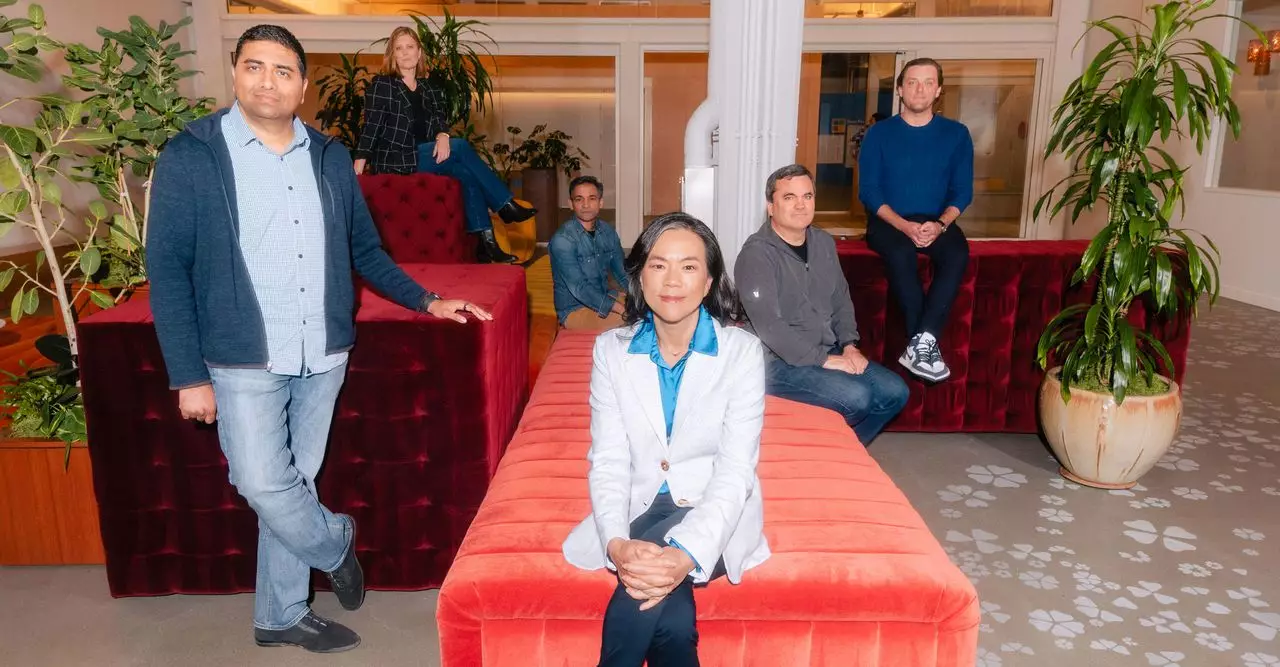In the ever-evolving landscape of artificial intelligence, the crux of sustainable advancement lies in profit generation. While numerous tech titans, particularly Google, continue to unveil groundbreaking AI features, the fundamental challenge remains the same: turning these innovations into revenue. The truth is that most consumers aren’t yet inclined to pay directly for AI enhancements, leaving companies like Google with little choice but to revert to their traditional revenue models—selling ads embedded within their services. This model not only extends to Google but reflects a broader trend within Silicon Valley, where companies raise funds through user data, time, and attention, all while protecting themselves from liabilities via convoluted terms of service agreements.
Despite Google’s extensive reputation, their AI innovation trail seems to be lagging behind competitors. Sensor Tower’s data indicates that OpenAI’s ChatGPT has amassed an impressive 600 million installations globally, overshadowing Google’s Gemini app, which has only reached 140 million. Competing AI applications such as Claude, Copilot, and DeepSeek are not just carving out niches; they are gaining momentum, backed by wealthy investors willing to wager on the future of generative AI. The current race can seem overwhelming, as firms scramble to develop products that can recoup the billions invested in AI technologies, against the backdrop of rising operational costs and intensifying competition.
Environmental Costs and Economic Sustainability
The societal ramifications of generative AI go beyond market competition; they also pose environmental challenges. The production of such technologies is voracious, consuming energy levels comparable to that of aging coal-fired plants and nuclear reactors. Companies boast about ongoing productivity efficiencies that are intended to alight the pathway to a more sustainable and profitable future. However, the questions that linger are whether these optimizations can genuinely mitigate the ecological cost or if the promise of generative AI is merely an alluring mirage.
Google faces additional pressure; they are bracing for potential antitrust rulings that could slice up to 25% of their search ad revenue. This impending financial shortfall necessitates urgent action within the company, wherein executives and researchers feel a mounting sense of urgency. The reality for Google employees is grim; some have reportedly worked through holidays just to keep pace. The message from Google co-founder Larry Page, suggesting that a “sweet spot” of 60 hours a week is optimal for productivity, reflects a dangerous culture of overwork that pervades major tech firms. Stories circulate among current and former employees about anxiety surrounding layoffs, burnout, and legal woes, further intensifying the atmosphere of pressure.
The Quest for Artificial General Intelligence (AGI)
Amid the quest for financial viability, there remains an unyielding ambition at Google DeepMind: the creation of Artificial General Intelligence (AGI). This vision, spearheaded by Demis Hassabis, aspires to develop systems capable of human-like reasoning across various tasks — a daunting endeavor that necessitates substantial improvements in machine cognition. Hassabis has passionately chased this goal, even taking the Astra prototype for walks in London to understand how such technology might weave seamlessly into the physical world.
Interestingly, one of the more significant strides towards AGI is OpenAI’s release of its “Operator” service. This initiative equips AI with agentic capabilities, enabling it to perform tasks online as a human would. However, the service has garnered some criticism due to its slow speed and inherent unreliability, not to mention its steep price tag of $200 per month. Nonetheless, Google is strategizing to integrate similar features into its Gemini roadmap, potentially revolutionizing daily tasks such as meal planning and grocery shopping.
Taking Risks in Pursuit of User Engagement
As Google moves forward with Geminis and other AI solutions, it faces the inherent risk of erring under pressure—a feat illustrated by a recent marketing blunder that highlighted the AI’s ineptitude in estimating global cheese consumption. Such mistakes can sharply undermine user trust and tarnish brand credibility. However, Google’s leadership, including CEO Sundar Pichai, appears committed to developing more intimate and dependable AI experiences, weighing the need for swift innovation against the necessity of careful execution.
Despite hurdles, there remains an air of optimism among proponents of AI technology, including regulatory bodies that are starting to appreciate its potential. Governments reflecting on the role of tech in society could bring about an era of constructive oversight instead of hindered progress. Yet, in the race for AI supremacy, companies like Google must tread carefully, ensuring their groundbreaking adventures into the unknown do not come at the expense of ethical considerations, employee welfare, and environmental sustainability. The questions remain: how can they balance these competing priorities, and will they succeed in creating a future where AI truly serves humanity?

